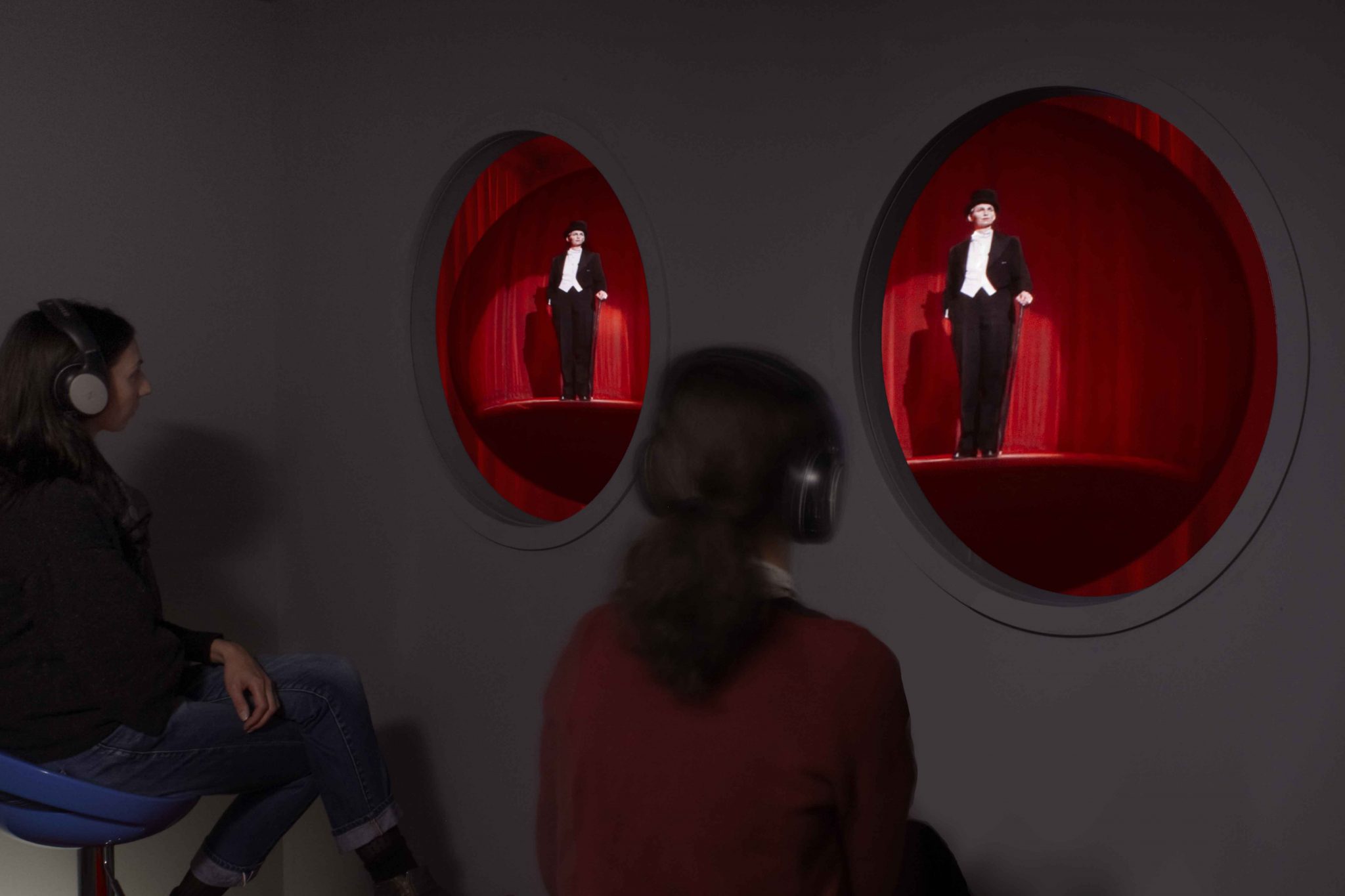Lindsay Seers practice keeps on getting entangled within itself, as many motifs from her previous works – such as biographical points of departure which are dissected into historical narratives, a preoccupation with gender, double circular screens and an emphasis on the architectural environment that houses the video projection – return in her new video installation Entangled2 (Theatre II) at Matt’s Gallery.
Only two spectators are allowed each time into a kind of private cinema, a small booth with two circular windows. Through them, two balloons hanging from the ceiling can be seen, which function as round screens for two almost completely identical projections. The spectre of Seers’ great-great-uncle George, a sailor with different-coloured eyes, who starred in the artist’s previous work Nowhere Less Now (2012) – a hallucinatory shipwreck-like Artangel commission at Kilburn’s Tin Tabernacle – is present here as well. We see the work through his eyes, as one projection is filtered through a bluish lens and the other through a brownish hue.
The theme of doubles, identical or different, seeps into the entire \nnarrative, if one could use such a lineal term for this jumble of fact, \nfiction, identities and anecdotes
The theme of doubles, identical or different, seeps into the entire narrative, if one could use such a lineal term for this jumble of fact, fiction, identities and anecdotes. The work takes two early twentieth century Victorian male impersonators, Hetty King and Vesta Tilley, music hall legends, as its historical backdrop. Various contemporary actresses, at least three according to my count, ‘play’ the two drag queens’ historical role models. The female voiceover tells the tale as if all of these entangled past and present personas were one – the artist perhaps? Either way, it is as if Judith Butler’s famous argument about gender being a mere social construct is being stretched out here to encompass an even broader notion of ‘identity’.
Both King and Tilley apparently performed at the Paragon Theatre, now the Genesis Cinema, located not far from Matt’s Gallery. At the gallery, Seers had created an intimate music hall, lined with red curtains and pierced by peepholes. There are a few aesthetically breath-taking moments, especially when the two balloons are lit by the images of the actresses standing in front of a huge gleaming-red curtain, which transforms the entire installation into a three dimensional David Lynch-like cinematic experience.
The physical condition of great-great-uncle George is called heterochromia – eyes of contrasting colours. This is explained in the work – over images of DNA – as the result of non-identical twins fusing together in the womb to become a single being. The narrator, apparently suffering from the same condition, states that it is as if she carries the leftovers of a matter of another person within her. It is the failure of a genetic process.
This genetic process is not just part of the artist’s DNA heritage; it can also relate to the theoretical influences of her practice. Seers has said in interviews that she is deeply inspired by Bergsonian ideas, and this can be seen in her recurrent attempts to entangle past and present into a continuous ‘durée’ – a Bergsonian concept of time as a continuous multiplicity which cannot be dissected into single parts of cause and effect. By using the genetic-biographical reference of heterochromia, Seers builds on another Bergsoninan argument, which objects to the assumption that final causes determine the course of all events. She challenges the status of genetics as a determining factor, as she does with gender. In her works, as in Bergson’s theory, an event can be explained by its cause only retrospectively.
Although Seers’ layers of complexity are as prevalent as ever in Entangled2, by the end of the fifteen-minute experience the theme of doubles wears a little thin. It is an endless reflection of two screens, watched by two spectators through two windows, filtered by two eyes, showcasing the story of two actresses who lived double lives. The form of the installation is overly literal, and functions as an unnecessary repetition of its content. By the end of the fifteen-minute film, the balloon-like screens, which initially granted the images a sense of round materiality, seem superficially flat.
